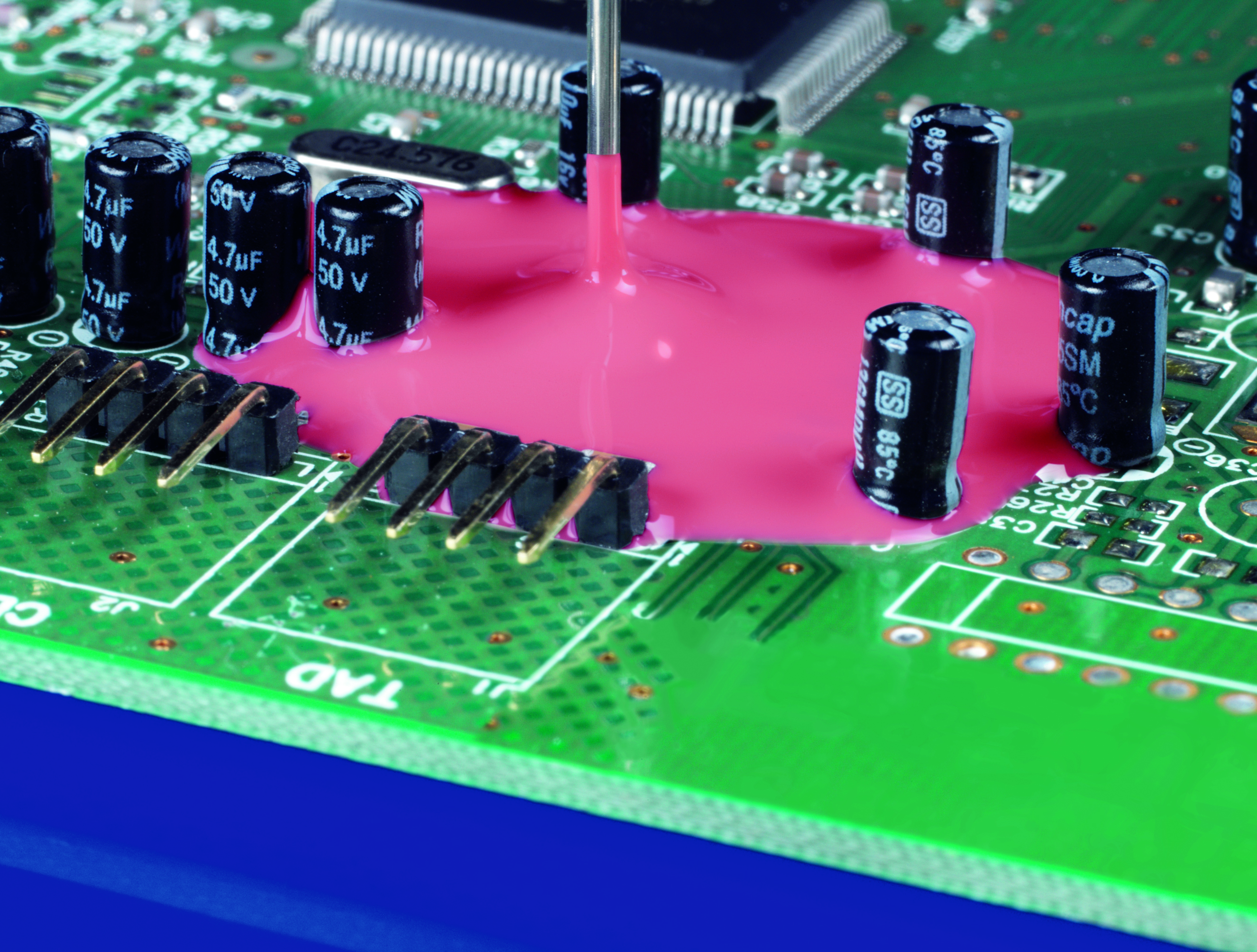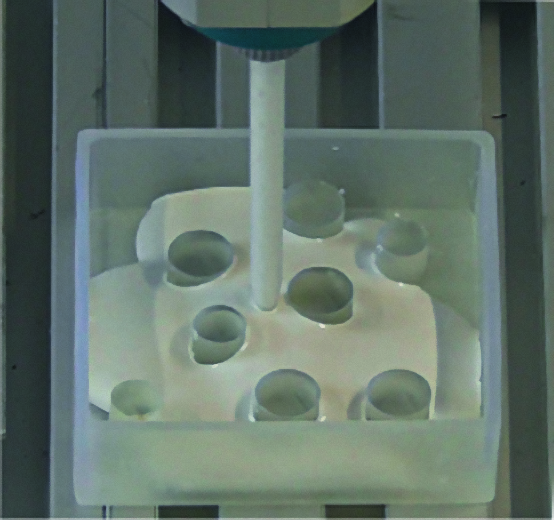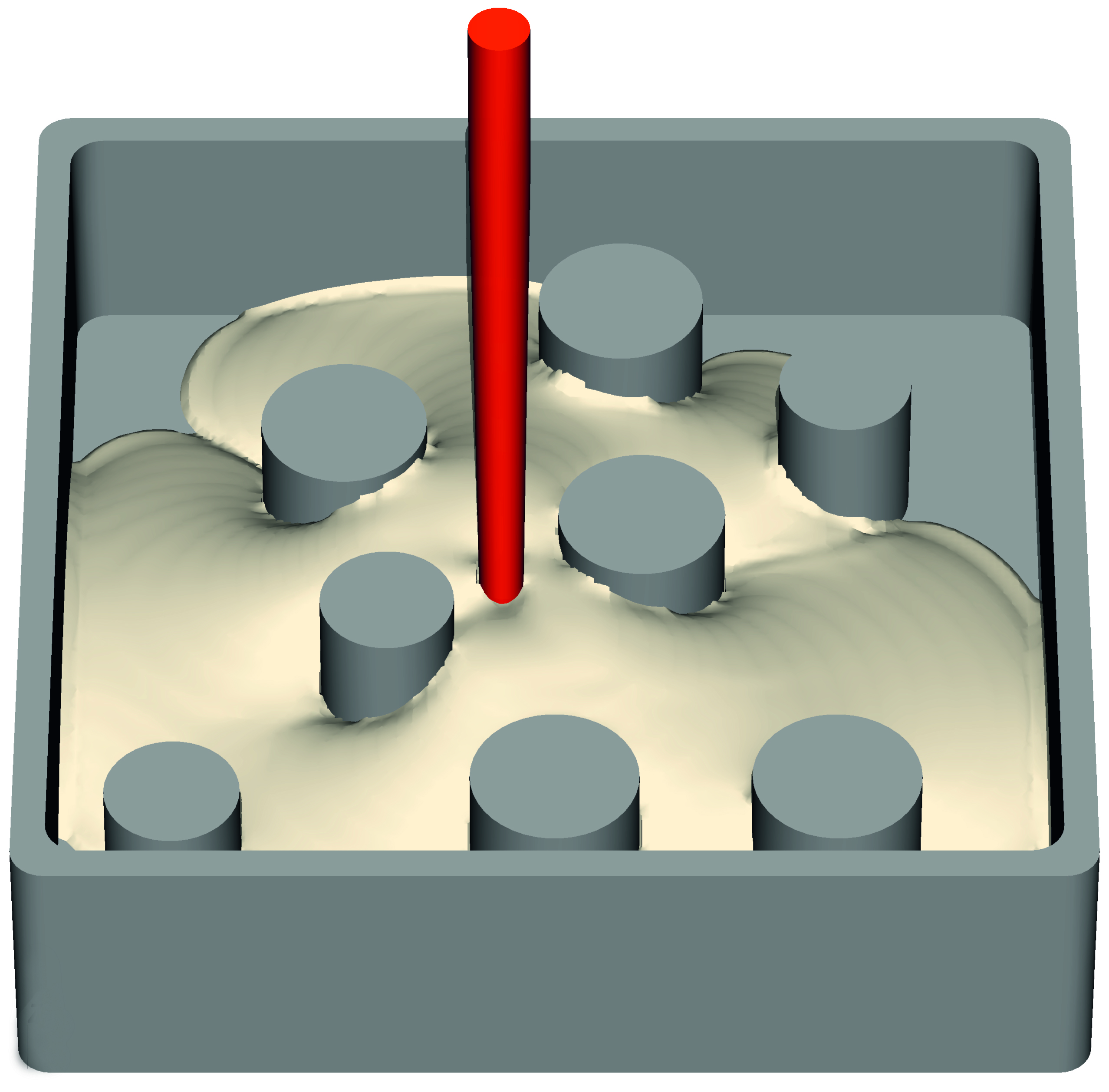By potting, electronic devices are completely surrounded by particle reinforced polyurethane resins to ensure their reliability. In the SOVEB project (Simulation-supported Optimization of the Potting Process of Electronic Components) we simulate this process using our FLUID software so that industrial enterprises are able to optimize their production steps.
The rapid development of microelectronics has led to the fact that isolated electronic components increasingly are becoming highly integrated and modular component systems. This results, among other things, in a high heat production during operation. But also other requirements such as long-term stability and functional reliability increase with the complexity of the assemblies. To name one example: LEDs are sensitive electronic components and often require additional protection against mechanical damage, humidity and other environmental influences.



